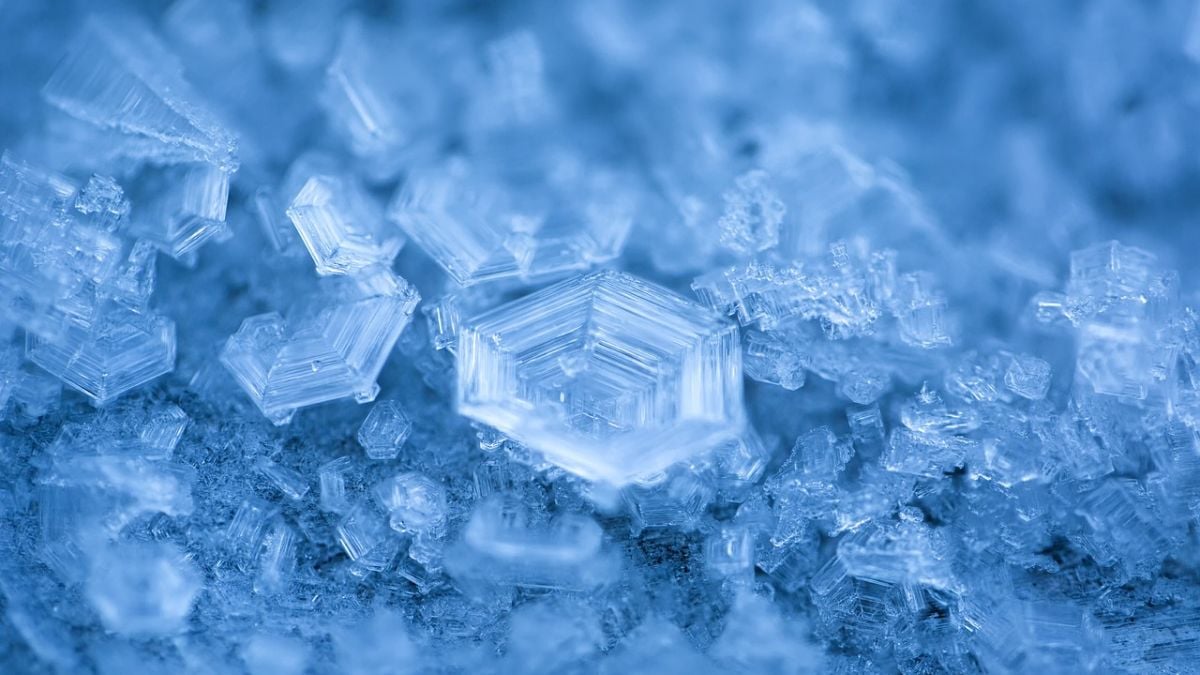Now Reading: Scientists Discover Rare ‘Plastic Ice’ in Lab, Revealing New Clues About Icy Exoplanets
-
01
Scientists Discover Rare ‘Plastic Ice’ in Lab, Revealing New Clues About Icy Exoplanets
Scientists Discover Rare ‘Plastic Ice’ in Lab, Revealing New Clues About Icy Exoplanets

In a groundbreaking discovery, scientists have successfully created and observed a rare form of ice called plastic ice in laboratory conditions. This hybrid form of water, never before seen in real-world experiments, provides new insights into the deep interiors of icy exoplanets and moons, such as Neptune and Jupiter’s moon Europa.
What is Plastic Ice?
Plastic ice is formed when water is subjected to extreme pressures and temperatures, above 177°C and 30,000 bars of pressure. Unlike typical ice, it retains a cubic crystal lattice, similar to Ice VII. However, what makes plastic ice unique is its ability to allow water molecules to rotate while maintaining a fixed position. This unusual plasticity means the ice can be deformed, but its basic structure remains intact.
Groundbreaking Laboratory Experiments
The experiment, conducted at the Institut Laue-Langevin in France, involved exposing water samples to intense pressure using a neutron beam. This allowed scientists to observe molecular motion under extreme conditions. The results confirmed the existence of plastic ice VII. Interestingly, water molecules in the ice did not move freely as expected but rotated in a jerky manner, challenging prior theories.
Insights Into Planetary Interiors
This discovery is crucial for understanding the internal compositions of icy moons and exoplanets. Experts like Livia Bove, a physicist at Sapienza University of Rome, believe that plastic ice might have played a role in shaping the internal structure of moons such as Europa and Titan. Baptiste Journaux, a planetary scientist at the University of Washington, noted that plastic ice VII could have affected water retention in these moons’ interiors during their early formation stages.
Moreover, plastic ice may also play a role beyond our solar system. It could be found within deep exoplanetary oceans, influencing how nutrients are exchanged between the seabeds and overlying waters. Researchers are also looking into plastic ice’s ability to incorporate salts, which could offer valuable insights into ocean chemistry on distant worlds.
A New Window Into Planetary Evolution
The creation of plastic ice opens up a wealth of possibilities for planetary science. It challenges previous assumptions and gives scientists a new tool for studying the internal processes of icy celestial bodies. As technology improves and more experiments are conducted, we may gain a deeper understanding of how planets and moons, both within and outside our solar system, evolve and support life.























